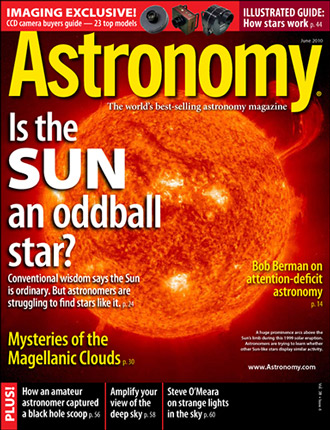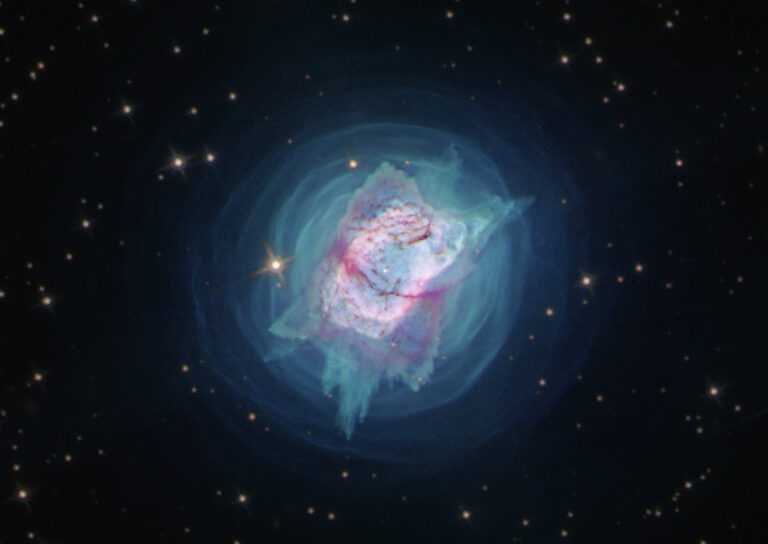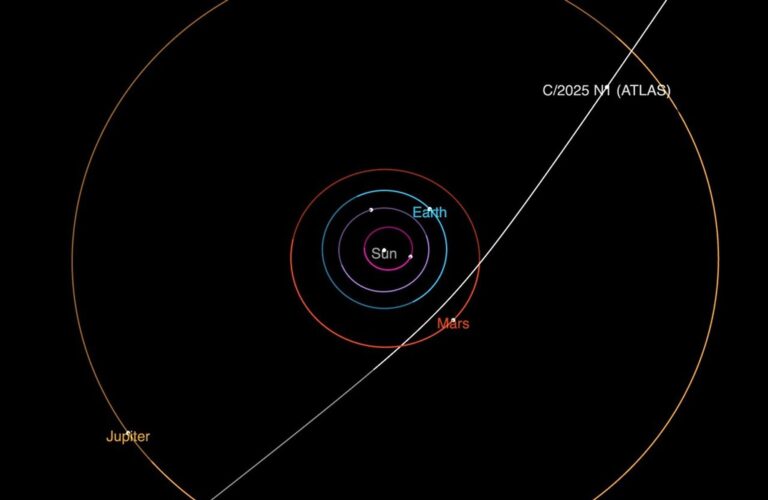
Key Takeaways:
WAUKESHA, Wis. — Today, most solar researchers confidently declare that our Sun is perfectly normal. But in the next breath, they protectively argue that the Sun is peculiar in its own right. So which one is it?
In “Is the Sun an oddball star?” author Bruce Dorminey delves into the questions solar researchers must continually ask about our Sun, including the most confounding: If the Sun is average, where are all its analogs among the hundreds of billions of stars in our galaxy?
Puzzles about the Sun’s magnetics, among other characteristics, make comparing the Sun with a close solar twin so important, writes Dorminey. “The trick is not in finding stars that make a nice chemical match. Such stars are fairly common. But researchers also want to find stars with similar ages, masses, and magnetic cycles as the Sun.” So far, scientists have only turned up a couple dozen.
To learn more about the oddities surrounding our Sun — from sunspot cycles to its life-supporting characteristics — pick up the June issue of Astronomy, on newsstands May 4.
“Mysteries of the Magellanic Clouds”
The Magellanic Clouds, two dwarf galaxies that appear in the night sky of the South Hemisphere as illuminated clouds of gas and dust, were first recorded in A.D. 964, and they’ve been fascinating astronomers ever since. But they truly became famous in 1987 when the Large Magellanic Cloud produced the nearest supernova in 300 years. In “Mysteries of the Magellanic Clouds,” Assistant Editor Bill Andrews explores what scientists have learned about our galactic neighbors and how these discoveries might hold the keys to understanding the biggest mysteries in the universe.
“Join the CCD revolution”
A small silicon wafer called a charge-coupled device (CCD) has changed the state of astrophotography in the past 20 years. With this technology, astroimaging is no longer just for those with unlimited patience and deep pockets; with practice, nearly anyone can produce images good enough share with other astronomy enthusiasts. To help buyers sift through the CCD options, Senior Editor Michael E. Bakich wrote “Join the CCD revolution,” in which he details 23 top cameras on the market today.
June night-sky events visible without optical aid
June 6: Red and blue contrast in the evening sky when Mars passes just north of the 1st-magnitude star Regulus.
June 9: Venus passes 5° south of the 1st-magnitude star Pollux in the morning sky.
June 26: A partial lunar eclipse is visible from much of North America and throughout the Pacific Ocean, Australia, and New Zealand.
Also in the June 2010 Astronomy
- “Illustrated: What makes stars tick?” — Inside most stars is a chaotic and high-energy environment. How do changes inside stars coincide with what we see?
- “How an amateur astronomer captured a black hole scoop” — When Stephen G. Cullen imaged Cygnus X-1 in May 2009, he discovered the effect this black hole has on its neighborhood.
- “Amplify your view of the night sky” — Night Vision Astronomy’s Binocular Photon Machine will triple your telescope’s aperture through electronics.
- “The Sky this Month” — Exclusive pullout star charts will guide you through June’s night sky.
- The June issue of Astronomy also includes Astro News, Bob Berman’s Strange Universe, Glenn Chaple’s Observing Basics, David Levy’s Evening Stars, Stephen James O’Meara’s Secret Sky, Ask Astro, Deep-sky Showcase, Telescope Insider, The Cosmic Grid, New Products, and Reader Gallery.
Editor David J. Eicher gives a video tour of the June 2010 issue








